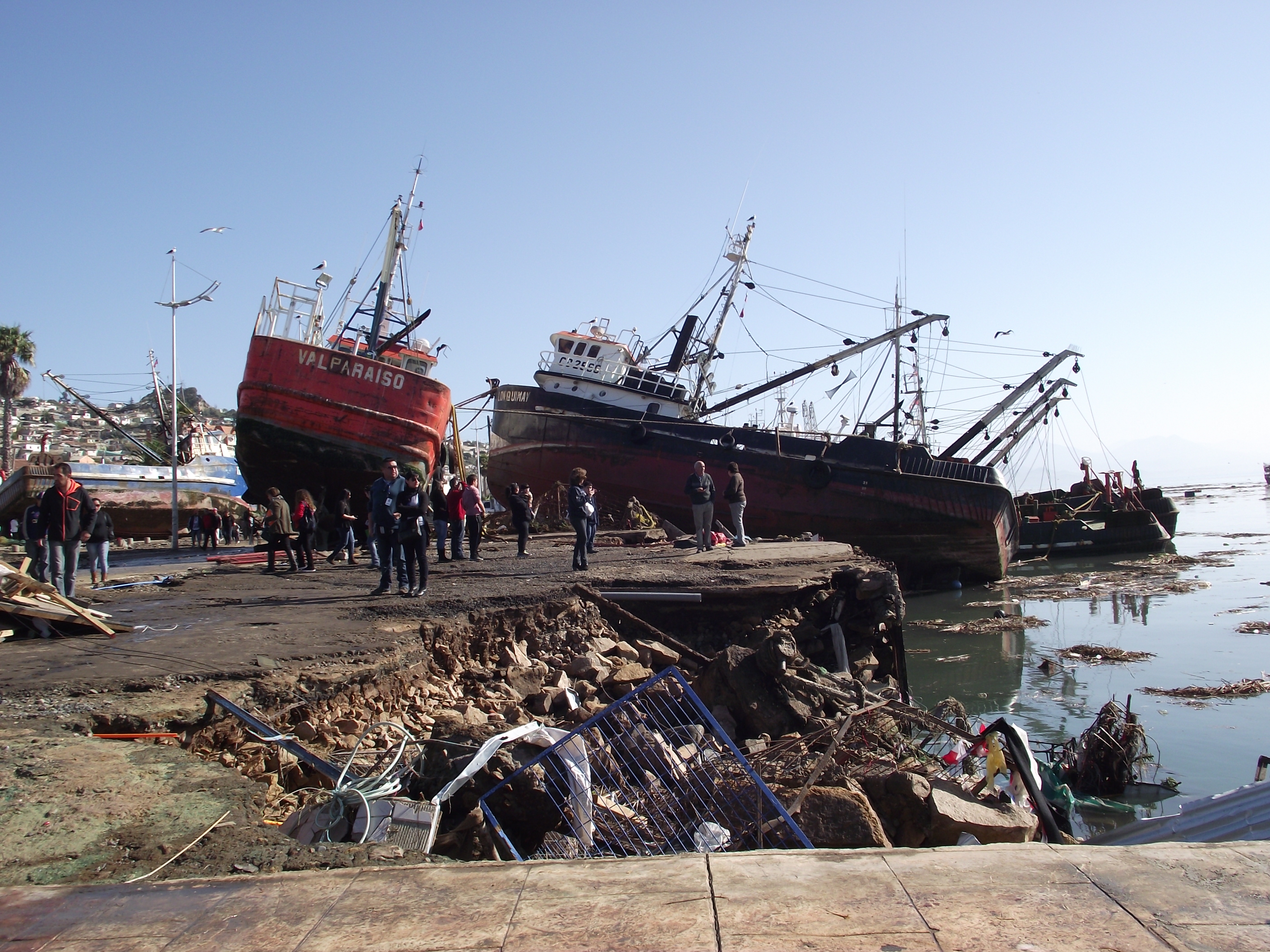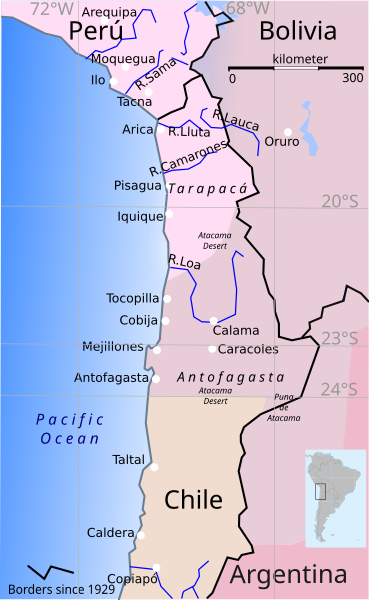Cruising along the Pacific coast of South America is a very
different experience than cruising through the Caribbean. Most ports get only
fifteen to twenty ships per year, so they have not developed the support
structures that Caribbean ports have. They also have not developed the
ubiquitous cookie-cutter shopping areas near the more heavily trafficked ports.
One aspect of many of the stops in South America is that our
ship docked in several commercial ports, that is, ports usually servicing
commercial ships. This was true when we boarded the Norwegian Sun in
Valparaíso, Chile. Valparaíso is the second busiest port in Chile, and the
active waterfront stretches for over mile. The passenger terminal is at the
north end, and after checking in we had to take a bus through the containers
and cranes to the southern end where our ship awaited us. This gave us an up
close look at the workings of the port.
 |
| Buses approaching the Sun at Valparaíso |
 |
| Our docking neighbor |
 |
| Dock worker taking a photo of our cruise ship |
Coquimbo Chile
 |
| Tribute to Neruda and Mistral |
Our first stop was in Coquimbo, Chile. Coquimbo is a city of
about 165,000 residents, although you would never have known this on the Sunday
morning we were there. The streets in the downtown area were mostly deserted.
One reason was that the town is still recovering from being hit by a
15 foot tsunami
on Sept. 16, 2015. The fifteen foot wave had a devastating effect on the
downtown and waterfront area, as you can see from these photos:
 |
| By Sfs90 (Own work) [CC BY-SA 4.0 (http://creativecommons.org/licenses/by-sa/4.0)], via Wikimedia Commons |
 |
| By Sfs90 (Own work) [CC BY-SA 4.0 (http://creativecommons.org/licenses/by-sa/4.0)], via Wikimedia Commons |
Because of the damage to the port we had to take a tender into
the port instead of docking, something I try to avoid. I hate waiting on line
for the tender, and I the boat ride is usually really bumpy. When I got to
shore the effects from the tidal wave was still obvious. The area around the
dock was still torn up. As I was taking pictures a couple approached me and
asked where I was from. After introductions Pedro Asnudillo and Susana
Galleguillos gave me a brief description of the damage caused by the tidal
wave. They also expressed how happy they were that tourists were returning to
Coquimbo.
 |
| The tender is a small boat from our balcony |
 |
| Inside the tender |
 |
| This statue contains a children's slide |
 |
| Pedro and Susana |
Downtown Coquimbo was pretty empty. There is a nice little
plaza with a stage and a tribute to Chile’s two Nobel Laureates – Pablo Neruda
and Gabriela Mistral. There is also a quaint church just off of the plaza. I
walked around
the
empty Barrio Ingles. This
neighborhood is filled with buildings dating back to the 1870’s when a
significant population of British immigrants came to support the mining,
banking and shipping industries. Unfortunately, the museums that were listed on
the tourist map were not open. I gathered that they had not yet recovered from
the tsunami. One thing that I really like were the stairways that led from the
center of town to the residential areas. They have been given painted themes
such as landscapes or funny scenes.
 |
| Plaza Mayor |
 |
| Parroquia San Pedro de Coquimbo |
 |
| Casa Bauza built in 1889 |
 |
| Casa Vicens, built in 1846 |
 |
| Casa Chesney-Cosgrove, replica of the original house |
Arika
 |
| El Morro de Arica |
After a day at sea we next docked at the town of Arica, near
the Peruvian border. My first observation, before we even got off of the boat,
was that the climate at Arica is very arid. The town is dominated by large hill
called
El Morro De Arica. The hill is
barren and topped with the largest Chilean flag I saw during the entire trip.
Arica played an important role in Chile’s history. Prior to
1879, the area around Arica was part of Peru and Bolivia, but was a major port
for shipping out ore from Chilean mines. When Bolivia tried to increase the
export taxes on the Chilean copper, silver and gold ore, contrary to a treaty,
Chile went to war with Bolivia and Peru. The
War of the Pacific
lasted four years, but was effectively over when Chile captured Arica in 1880,
cutting Bolivia off from the Pacific Ocean and forcing it out of the war. The
final borders were not set until 1924, and to this day Bolivia is land locked,
and uses the port of Arica to ship its goods, with a Chilean guarantee of free
transit.
 |
| By Keysanger (Own work) [CC BY-SA 4.0 (http://creativecommons.org/licenses/by-sa/4.0)], via Wikimedia Commons |
Today the city of Arica is home to almost 200,000 people. It
has several industries, including the processing of fish meal, transportation
of goods and the port to support it. Leaving the port area we first entered
Plaza Colón. This airy, large plaza hosts a small artisan’s marketplace and is
adjacent to the main shopping area of the city. From the plaza it is an easy
walk to most of the city’s main tourist attractions. There is a tourist
information office just off the plaza and they have a very nice walking tour
available in several languages. You might want to take a taxi up to the top of Morro de Arica as it is a climb of 139
meters. This fort was at the center of 1880’s battle.
 |
| Plaza Vicuña McKenna |
 |
| The Amazing Ms D. being interviewed by local tv |
 |
| These cousins make and sell beautiful beaded jewelry under the name Nómade |
Another interesting site is the
Museo
de Sitio Colón 10. This museum sits over the burial site of the Chinchorro
people dating back 10,000 years. The site was discovered while renovations were
being carried out on a house at this address, and after it was determined that
the site was not stable, they built the museum around it. An interesting, if
not eerie feature is that the Chinchorro mummies have been left
in situ with a clear Plexiglas floor protecting
the remains. Visitors are encouraged to walk over the bodies and examine their
burial up close.
 |
| Diagram of the Chinchorro burial site |
 |
| View of the city of Arica |
Two other interesting sites to me are the San Marcos
Cathedral and the Aduana (customs)
building. These buildings are particularly interesting because they were
designed by Gustav Eiffel of the French tower fame. He had developed a business
of designing prefabricated buildings, creating the pieces in France and then
shipping them to other places where they were assembled. Unfortunately the San
Marcos Cathedral was undergoing major renovations when we visited.
 |
| The Train Station |
 |
| Old Aduana designed by Eiffel |
 |
| Cathedral San Marcos By Heretiq (Self-published work by Heretiq) [CC BY-SA 2.5 (http://creativecommons.org/licenses/by-sa/2.5)], via Wikimedia Commons |
The neighborhood just north of the plaza is a very active
shopping area. This is the center of commercial life for Aricaños. Calle 21 de Mayo has been turned in to a
pedestrian mall and it was alive with people out shopping and eating. There are
many good restaurants along this stretch. One place I went to was a store that
sold school and office supplies to replenish a few things for keeping our
journals, so in I went. Shopping there involved a different process than I was
used to. I entered the store and everything was either on shelves of under a
glass counter. Taking a number, I waited my turn. Meanwhile I looked around the
store to figure out what I wanted. When it was my turn a very nice young lady
helped me with my order, and then gave my total to a gentleman behind the
counter. He rang up my bill and took my money. I then gave my receipt to the
person who helped me and she gave me my supplies.
Visiting Arica gives you a feel for life in Chile. They have
been able to build up a tourist industry without losing their identity.
































Great intro to the area. Who knew there was so much to see in this little town?
ReplyDelete